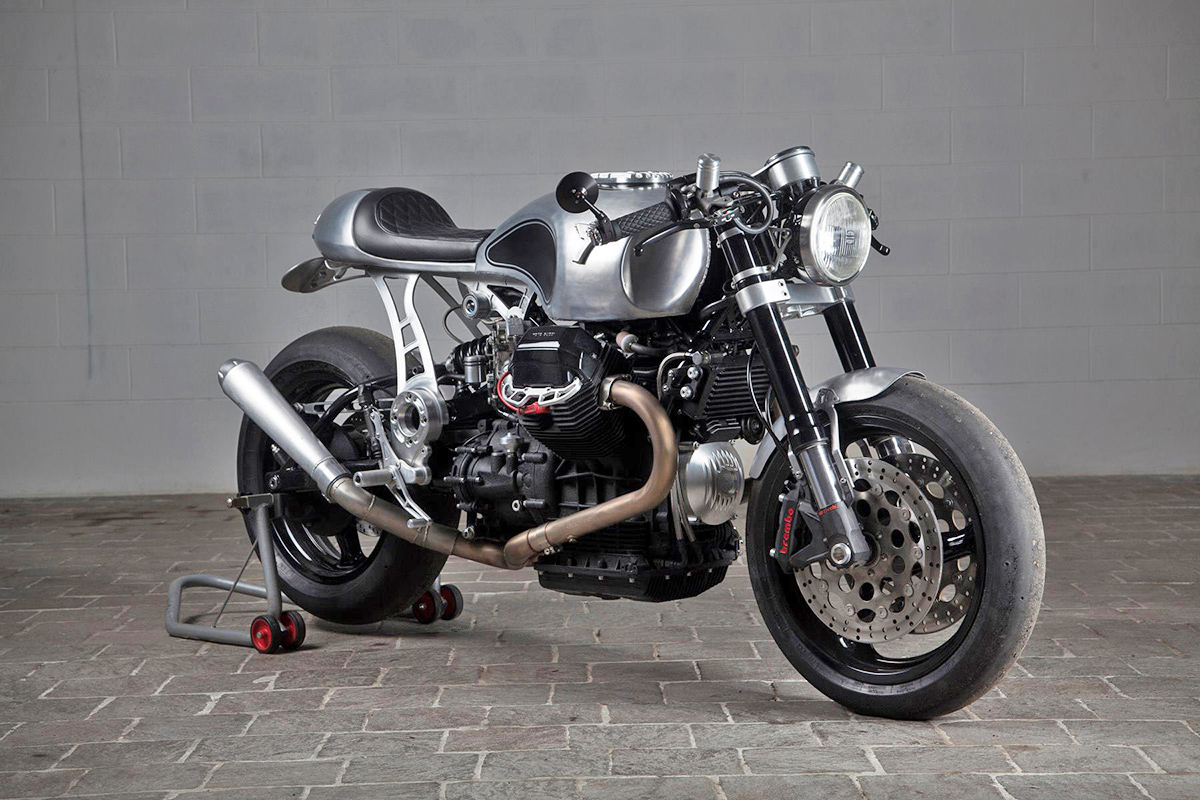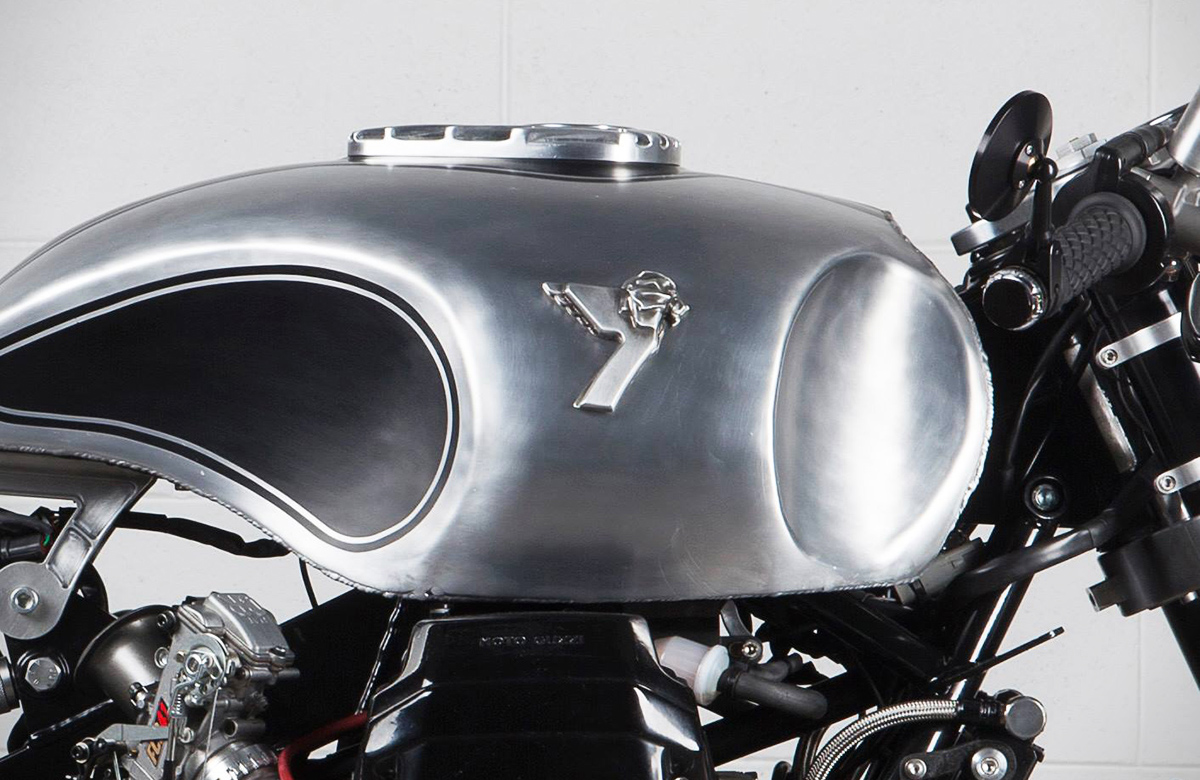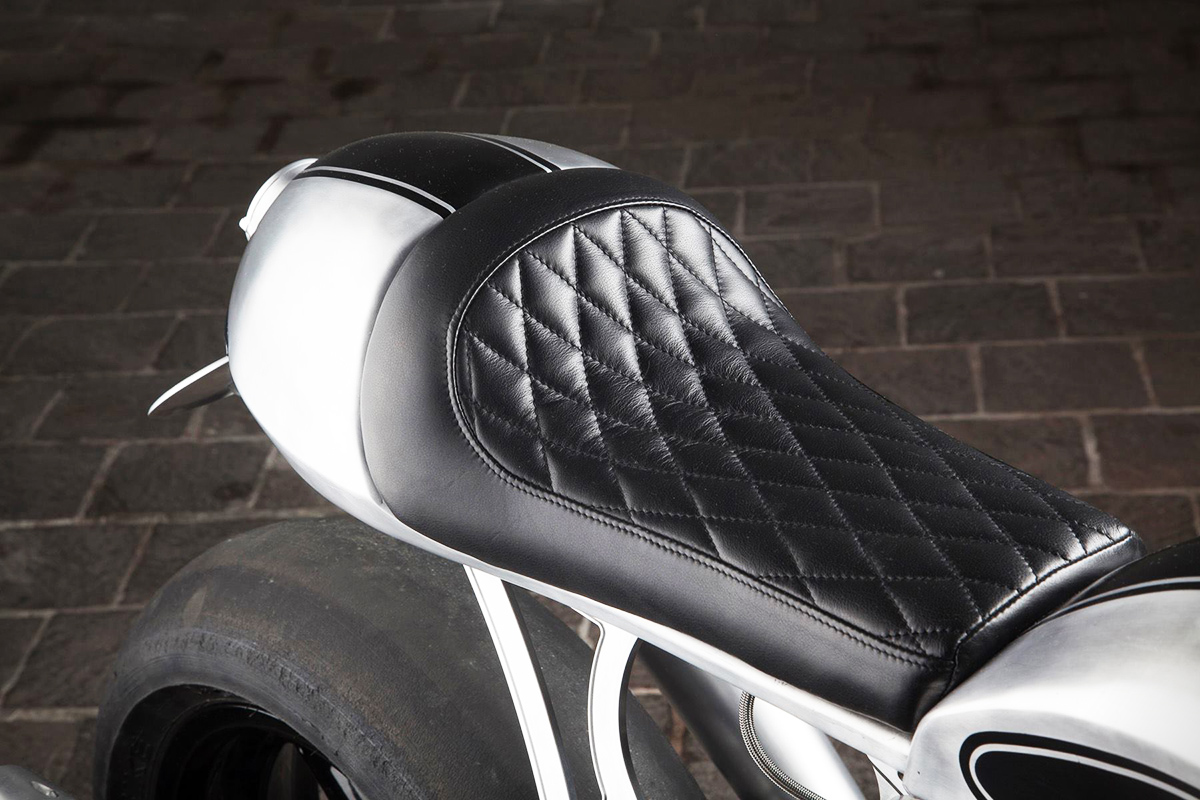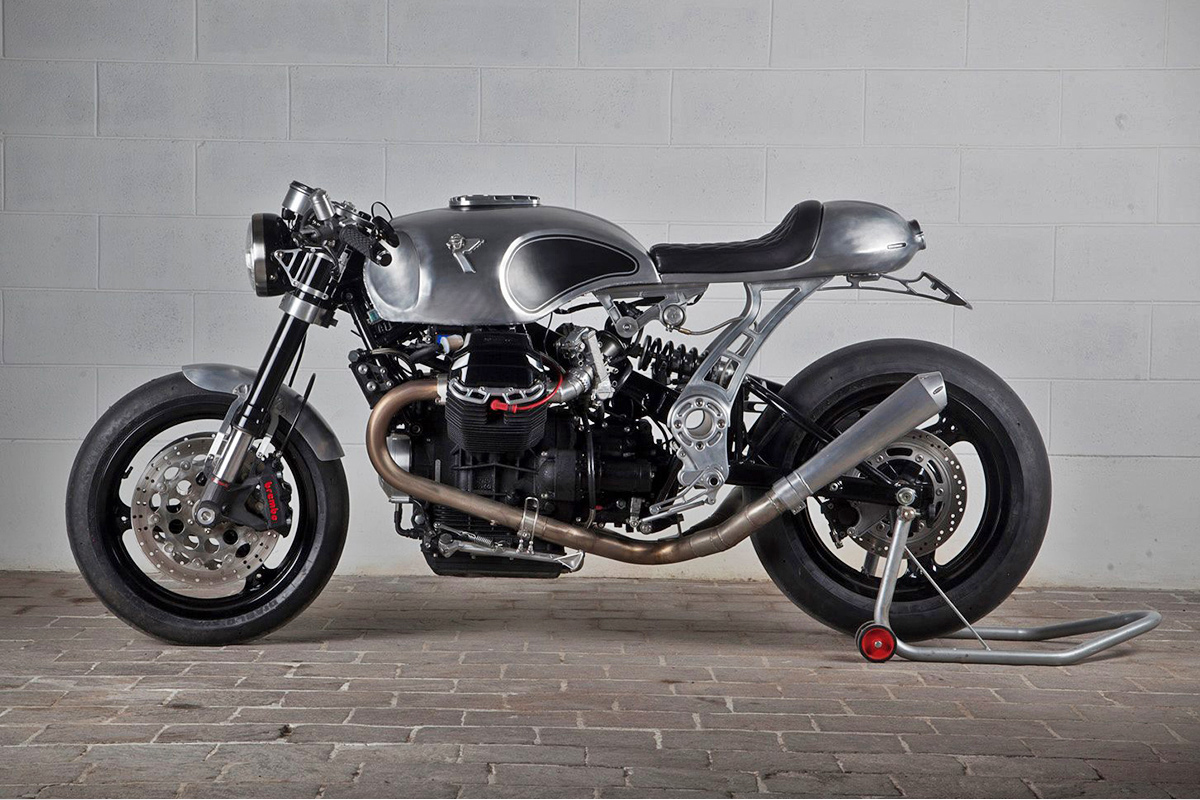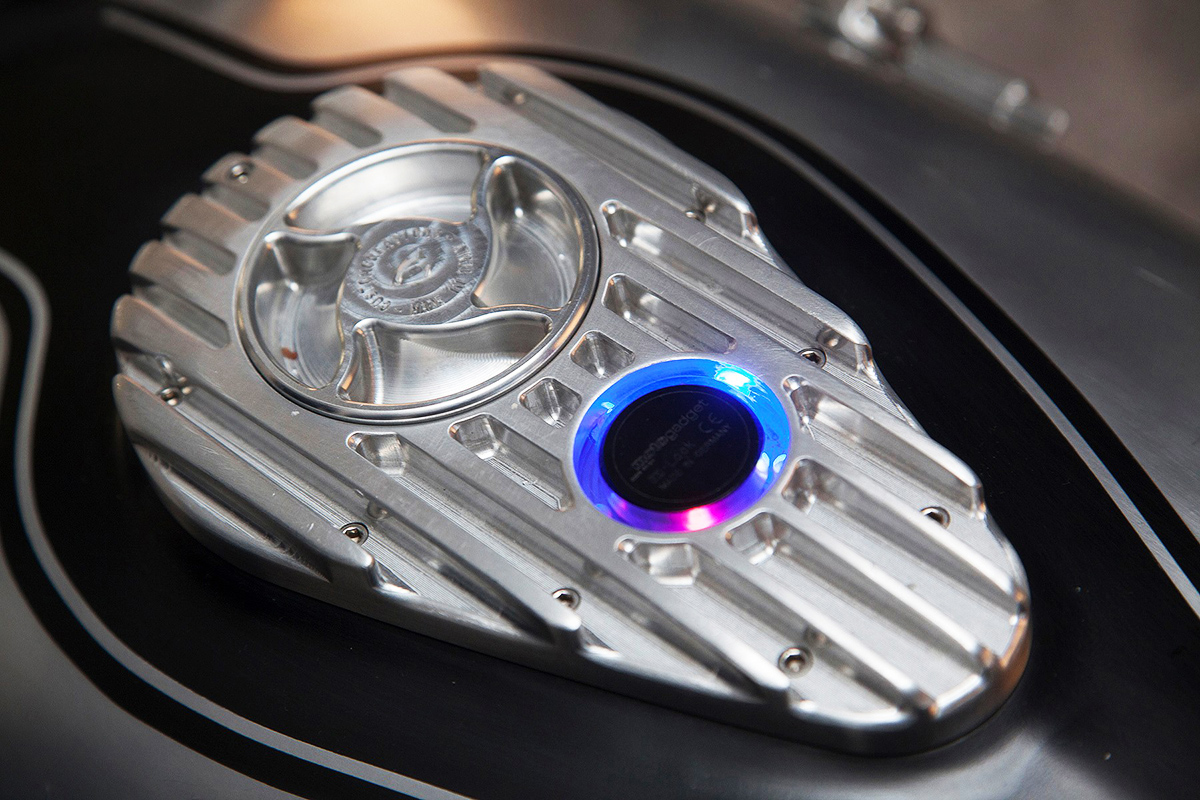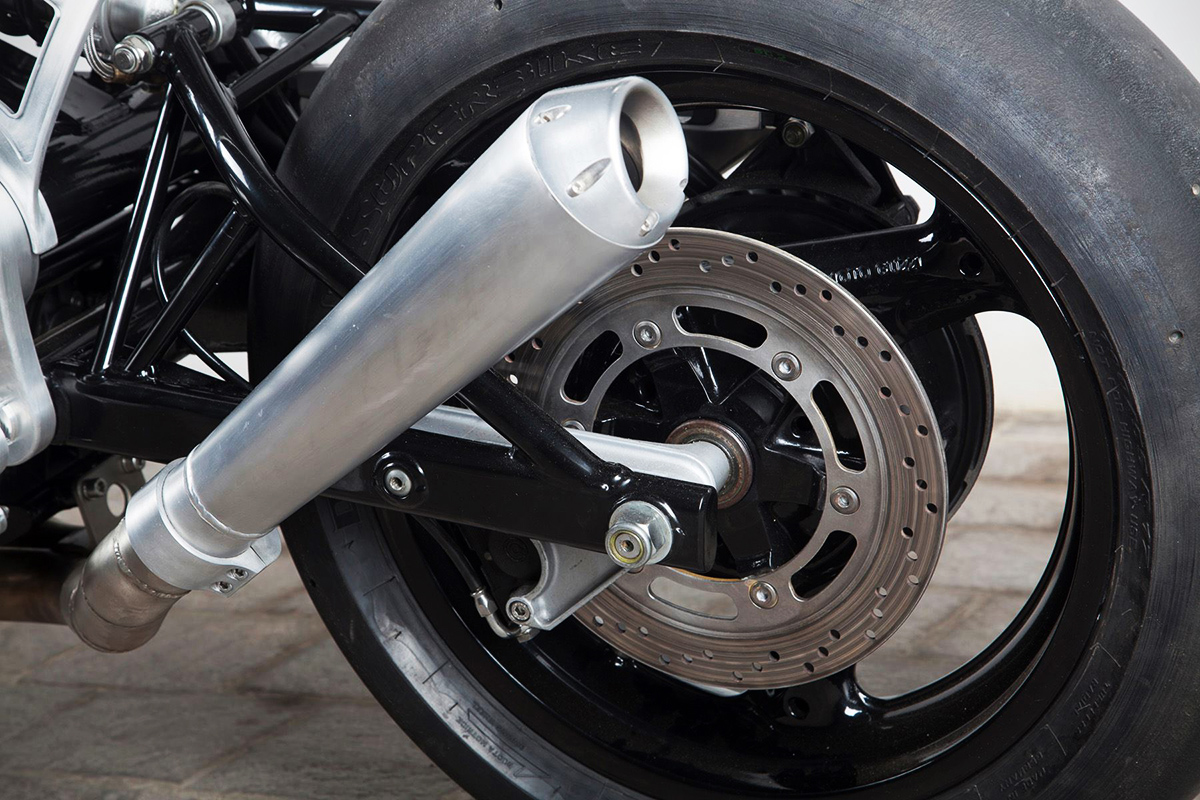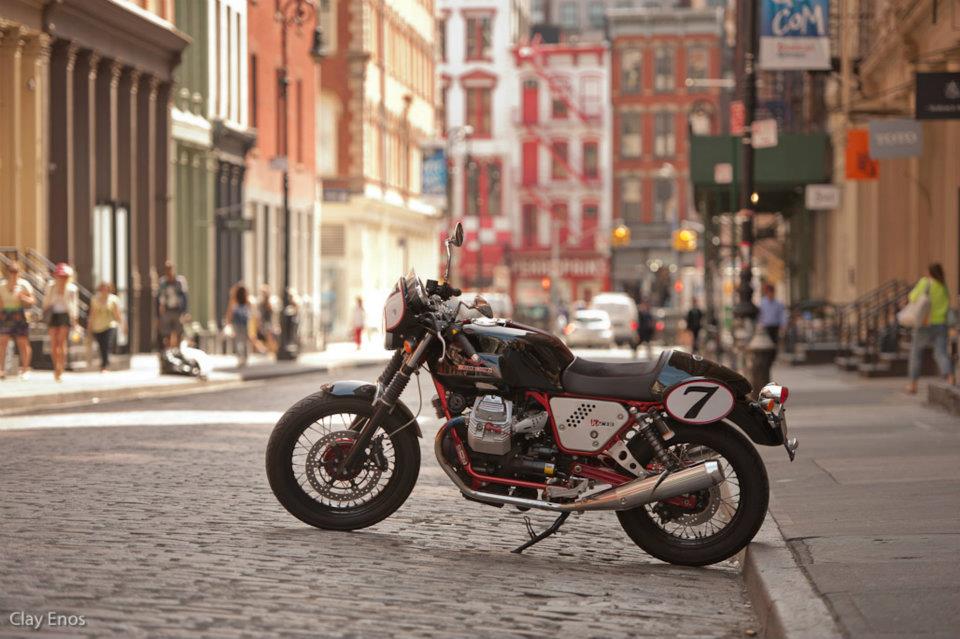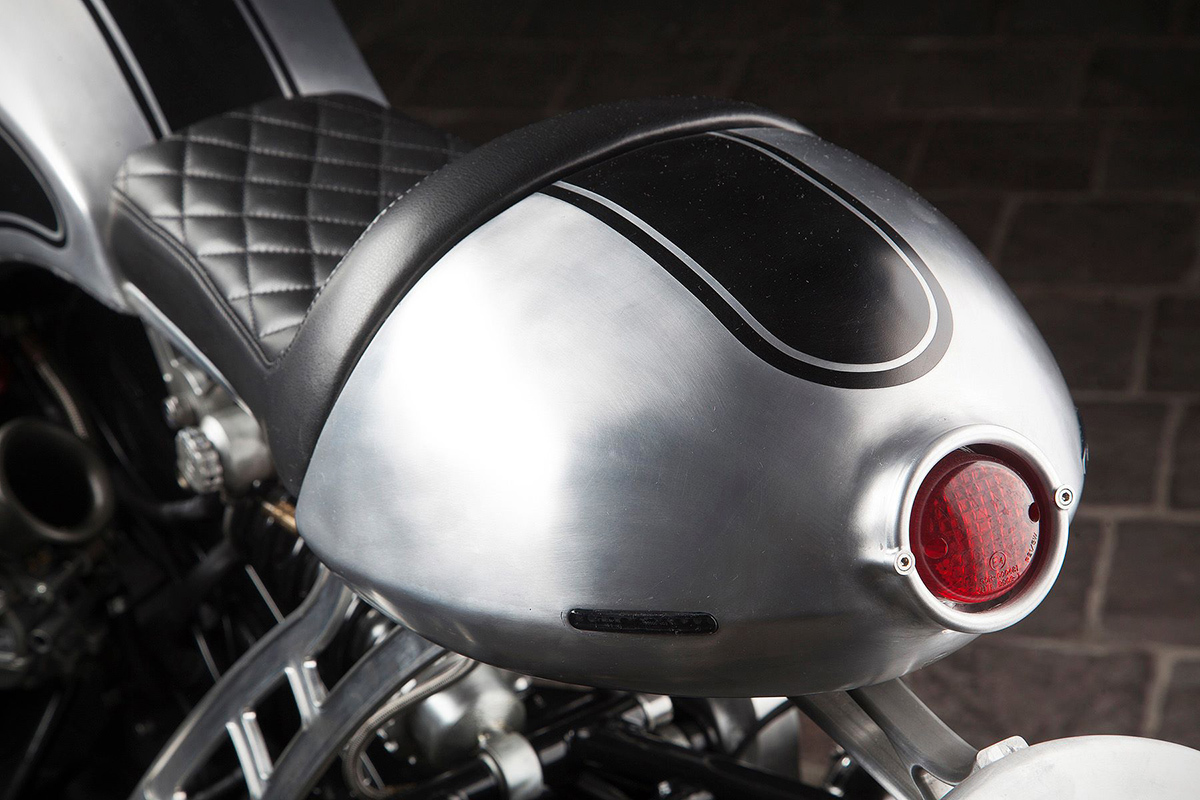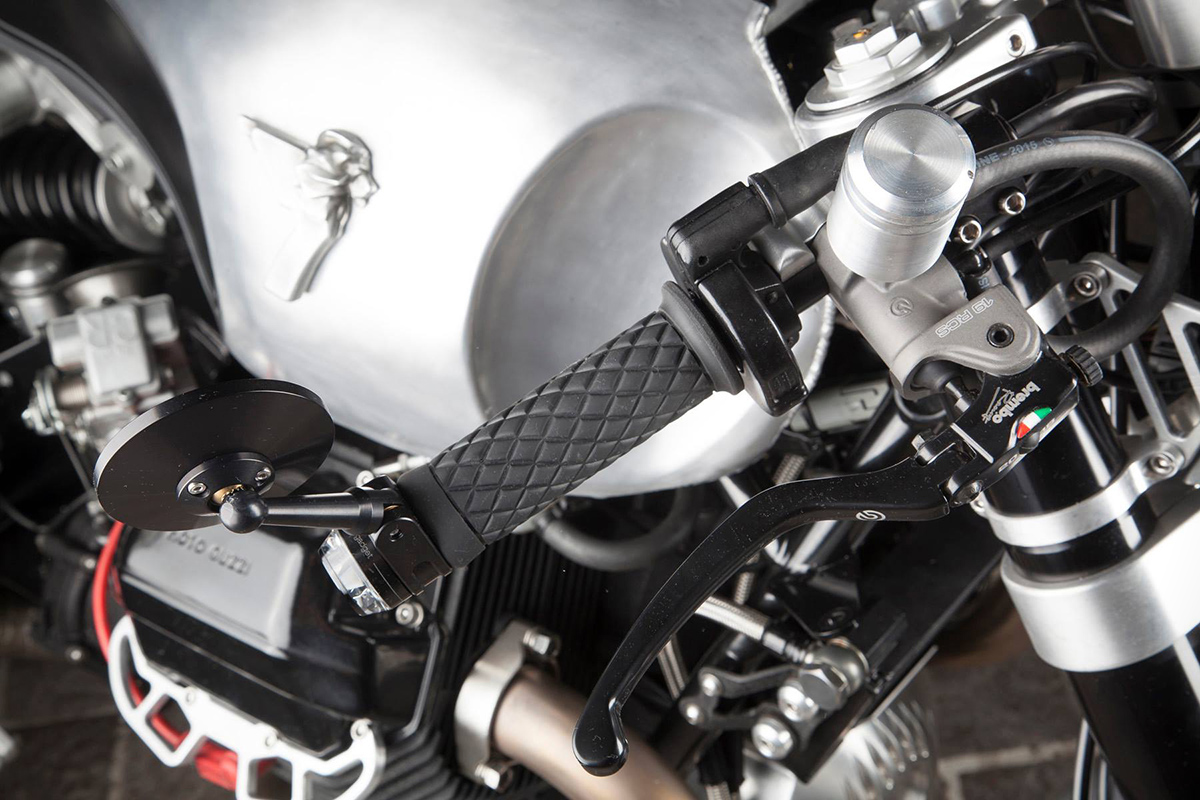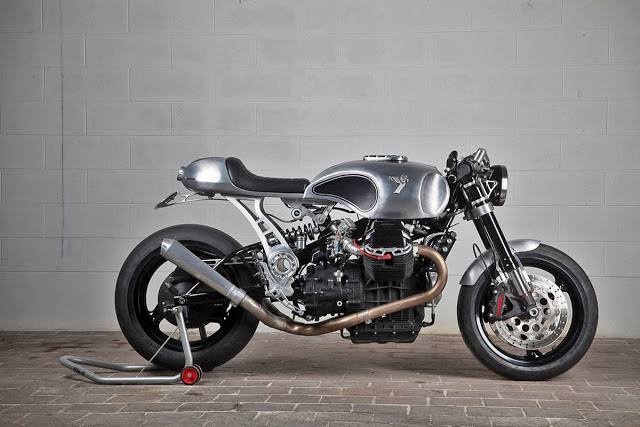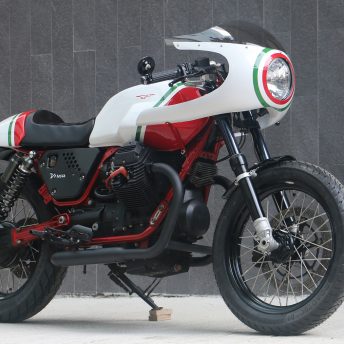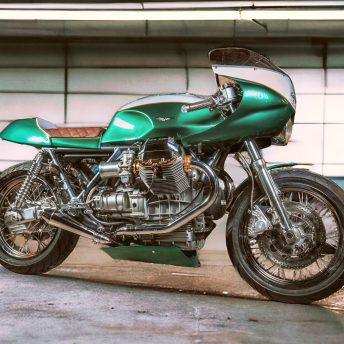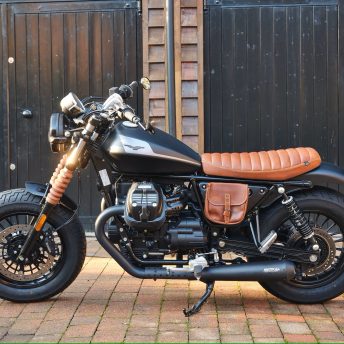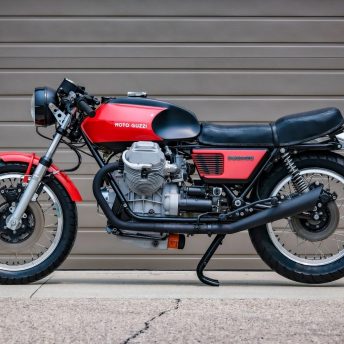After its release in 1999 the Moto Guzzi V11 received pretty average reviews. It was let down mainly due to excessive weight and poor build quality. Thankfully in 2001 when Aprilia to Guzzi under its wing quality improved dramatically, but they never managed to shed those extra kilos. So, when the team at Verona’s Seven Motors workshop set out to transform the V11 into a cafe racer, saving weight was their top priority.
With 221kg to lug around the V11’s shaft driven, 1064cc transverse V-twin had its work cut out for it. Despite 91 bhp and 70Nm of torque the V11 was a cumbersome beast with “decent” handling and braking according to MCNs test riders. Seven Motors studied the Moto Guzzi for places where weight saving could be maximised and decided the best option was to begin cutting.
The factory tank was discarded and the team stripped away the remaining bodywork to expose the bike’s frame. With the engine mounted in a stressed member configuration, the bulk of the frame was at the rear of the bike where it provided support for the seat and tail. The subframe’s steel tubular construction was oversized and overweight so it simply had to go. After cutting the old subframe away design began with sketches and careful measurement. Once the basic style and dimensions were agreed upon work moved to a computer where Seven Motors utilised CAD software to model the new parts in 3D. Once modelling was complete a CNC mill was used to cut the subframe from blocks of solid aluminium before bolting them to the bike.
With the new subframe in place, work began on replacement bodywork. To keep the weight to a minimum the use of aluminium would continue using traditional metal shaping techniques to construct the fuel tank and rear cowl. Aluminium was also used during the construction of the V11’s front fender and number plate mount. With the bodywork in place, the Seven Motors team revelled in how well the different styles of the milled frame and classic bodywork juxtaposed against one another, so it was decide this approach would dictate the rest of the build.
The weight saving continued with the fabrication of a set of alloy triple clamps to hold the bike’s front forks. Milled into the top clamp is a overshadowed by a centrally mounted tachometer. Clip on bars wearing Motogadget mirrors and bar end indicators sit at the top of each fork leg and the hand controls are Brembo items. Atop the fuel tank is another trick CNC body part holding the filler cap and a MotoGadget keyless M-lock ignition unit surrounded by a backlit LED ring.
With all the weight savings gained from these changes, the bike’s performance was already improved, but Seven Motors wanted to unlock more of the Italian v-twins potential. For this, they tasked a pair of Keihin FCR41 flat slide carbs with fuel delivery and constructed a custom pair of free-flowing mufflers using more hand-formed and milled aluminium parts.
Finishing touches are what make the difference between a good build and a great one and Seven Motors didn’t cut any corners when completing this build. In the rear end, you’ll find flush mounted LED indicators and a frenched taillight. The fluid reservoirs are all made from milled aluminium and the lion’s head tank badges are hand-cast aluminium. At the front of the engine is a finned cover styled to match the milled tank piece and the bike’s basic paint scheme is designed to highlight the aluminium components used in its construction.
Named ‘The Revenge 03″ Seven Motors may have been making a statement to Moto Guzzi on how they’ve improved upon a Moto Guzzi’s design. No matter what the meaning behind the bike’s name is it’s certain that Seven Motors have the ability to turn a heavy clunker into a cool cafe racer.
